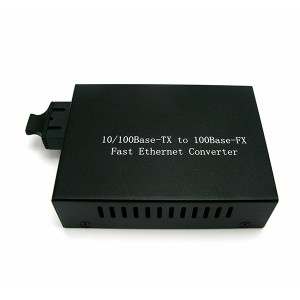An optical transceiver can best be described as a device that converts high-speed data from a cable source to an optical signal for communication over optical fiber. Optical transceivers are used to update the communications networks to manage broadband, to update the data center networks to make them manage traffic with higher speeds, to implement the backbone network for mobile communications.
For transceivers that plugs into Gigabit Ethernet and links to a fiber optic network, the Gigabit Interface Convertor is the standard and SFP is for small form factor pluggable transceiver. The GBIC transceiver operates as an input and output transceiver and is linked with the fiber optic network generally through the optic patch cords. GBIC transceivers are deemed to be ideal for any interconnections over the Gigabit Ethernet centers and for switches environment. The converters are virtually intended for high performance and continuing interactions that have need of gigabit or fiber channel interconnections. From SFP, users are able to generate connections utilizing the multi or single mode fiber optic ports along with the copper wiring.
The GBIC transceiver and the Cisco SFP offer companies with the opportunity to set up a Fiber Channel and Gigabit Ethernet connection effortlessly within their network. However, many Cisco GBIC transceivers would be the Cisco GLC-SX-MM, GLC-T, GLC-LH-SM, GLC-ZX-SM, and so much more. There are also 155M/622M/1.25G/2.125G/4.25G/8G/10G SFP optical transceivers, among which 155M and 1.25G are used widely on the market.
GBIC, SFP, SFP+, SFP, 1×9 covers low rate to 10G products, and is fully compatible with the global mainstream vendor equipment. And 10G SFP+ technology is becoming mature, with rising trend development of demand. 10G SFP optical module has been through development of 300Pin, XENPAK, X2, XFP, ultimately achieving to transmit 10G signals by the same size with SFP, and this is SFP+. SFP+, by its virtue of small size and low cost, meets the high-density requirements of devices to optic modules. Since 2010, it has replaced XFP and become the main stream in 10G market.
The SFP+ modules support digital diagnostics and monitoring functions, which are accessed through a 2-pin serial bus and provide calibrated, absolute real-time measurements of the laser bias current, transmitted optical power, received optical power, internal QSFP transceivers temperature, and the supply voltage. Digital diagnostic functionality allows telecommunication and data communications companies to implement reliable performance monitoring of the optical link in an accurate and cost-effective way.
Optical transceiver market driving forces relate to the increased traffic coming from the Internet. The optical transceiver signal market is intensely competitive. There is increasing demand optical transceivers as communications markets grow in response to more use of smart phones and more Internet transmission of data. The global optical transceiver market will grow to $6.7 billion by 2019 driven by the availability of 100 Gbps devices and the vast increases in Internet data traffic.
A palette of pluggable optical transceivers includes GBIC, SFP, XFP, SFP+, X2 form factors are available at Fiberyes. These are able to accommodate a wide range of link spans. The 10Gbps optical transceivers can be used in telecom and datacom (SONET/SDH/DWDM/Gigabit Ethernet) applications to change an electrical signal into an optical signal and vice versa.






